Pablo Dictter was a community fixture during the source port boom, releasing a slurry of small maps and also contributing to a couple of larger products, chiefly Alien Vendetta. He was a contributor to several different original Doom productions as well. One of them was No Hope For Life Episode One: Back to the Fight. The E1 replacement had PD working alongside Community Chest regular Andy Leaver as well as Jay Trent, now of The Becoming fame. Somewhere during the process of building NHFL, three of Pablo's levels were cut as they had too many darn maps. Dictter picked the castoffs up, dusted them off, wired them three more levels, and sent them to /idgames in July of 2001 as Subversion. This is a partial Episode 3 replacement for the Ultimate Doom spanning E3M4-E3M9.
The story was written by Joel Murdoch (Caverns of Darkness port programmer) who is listed as the co-author. I'm not sure to what extent he was involved in crafting Subversion; the TXT indicates that the levels are all Dictter's babies. Whatever the case, the plot is concurrent with the events of the original Doom and describes the downfall of the Deimos base. You are one of the stationed UAC guards when all Hell originally breaks loose. The technicians manage to shut down the gateway but didn't account for the demons to be able to open it back up from their side. And that's just what they do, except when they reestablish the link, they bring the entire damned moon. You are now the last remnant of the base personnel, fighting your way in a desperate attempt to escape to... something.
There are no fundamental differences between Dictter's levels here and the rest of his 2000-2001 output. Pablo's style consists mostly of corridors and corridor-shaped rooms that are lovingly greebled with all sorts of cool details. At this point of his authorial career, his true calling appears to have been more the make-fancy portion of environmental design. Sometimes the detailing borders on the ridiculous, as is the case with the ubiquitous presence of UAC cargo crates. Realistically, I can see where you would stuff them in hallways due to a limited amount of habitable space. Generally, however, they only serve to cramp an already constricted movement space.
E3M4-E3M6 are all straight techbase but have battle damage detailing and the baleful red sky of Inferno. It's a neat aesthetic. E3M7 starts to show the "subversion" of the installation with marble segments whose geometry is otherwise indistinguishable from the UAC base that has gone before. It's fitting, I suppose, since it's more about the perversion of the firmament that the demons brought into the their void. E3M8 is all wood and metal for a sort of Thy Flesh Consumed aesthetic, though it goes places that id never did with a flesh damage floor. E3M9 is still a corridor-based level but the hallways are more like jagged, irregular veins at odd angles.
I know that Pablo eventually goes big with some of his geometry - PC_CP's MAP16 may be his magnum opus - but there is a distinct lack of large, landmark rooms within these small, cramped affairs. You do get the occasional room but they're usually tiny, one major exception being the unusually interconnected pit / viewing gallery chamber seen toward the end of E3M5. The end result feels like the demons rearranged reality to link all of the hallways together, creating an interminable labyrinth, while throwing out the interesting bits that would allow victims to leverage their superior maneuverability. An amusing justification, perhaps.
The combat is actually pretty meaty for monster counts that don't break above 60. As an Ultimate Doom set, Pablo concentrates on using the shotgun and chaingun vs. shotgun guys, demons, imps, and what feels like a disproportionate number of cacodemons. Barons are regular if not exactly numerous starting with E3M5. The focus on hallways and small rooms mean that player pressure is always present. At times you get a taste of that feeling of last marine hopelessness, your back against the wall as wait for an opportunity to juke past goliaths. Pistol start players will get an even better taste of survival horror for a few of these level starts. The rocket launcher and plasma gun are available for some of these maps and feel like limited-use powerups. The claustrophobic combat makes the launcher cumbersome to use in some situations but you're probably just saving it for the inevitable goatman showdown, anyway.
I will probably continue to bemoan PD's indistinct hallway-heavy layouts as I play further into his catalogue but he has some neat gems tucked away in here. "Bad Shape" (E3M9) is cool not for the jagged corridors but a haunting sequence that takes you through a dark scene of Deimos slaughter complete with a short shock. "Subversion" (E3M8) has an imaginative bridge to cross in its opening sequence and its warped sector machinery offers a distinct theme. I enjoyed the story-telling that leads up to the titular moment in "Hell's Prince" (E3M5), especially the associated architecture. "A Cacodemon's Death" (E3M6) has a cute moment where you can peek through a damaged door to a tantalizing chaingun, prompting a poke or two around for a likely alternate entrance.
Subversion is a modest little mapset that provides sufficiently entertaining if not particularly interesting OG Doom action. I would have loved to see Dictter tackle larger levels with larger and more complex room geometry, but this calms the shakes. If your bar to clear is blasting monsters with the shotgun through dark, crate-lined corridors, then you might want to give Subversion a shot.


SUBVERSION
by Pablo Dictter
SOME TROPES NOT SUBVERTED
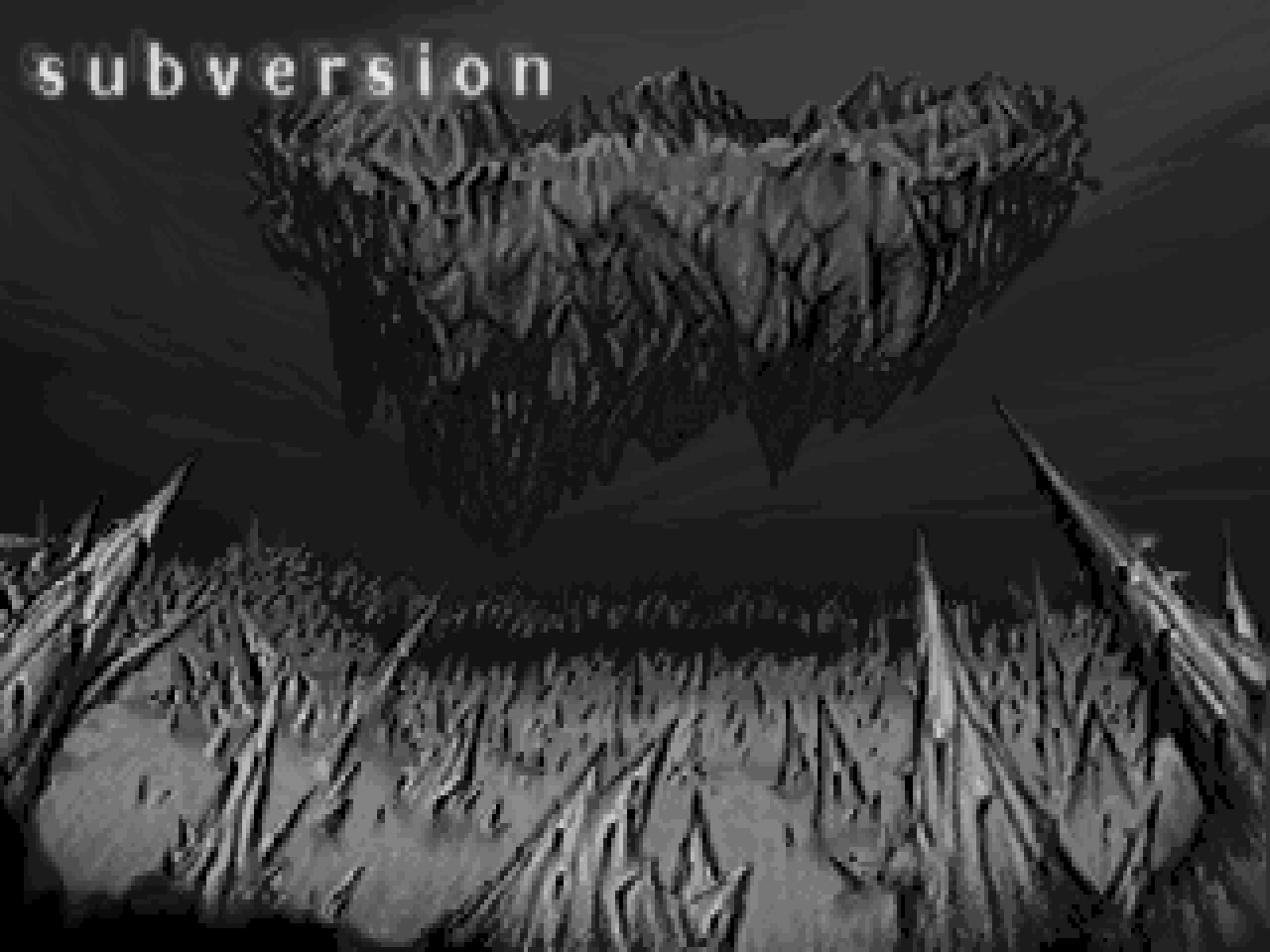
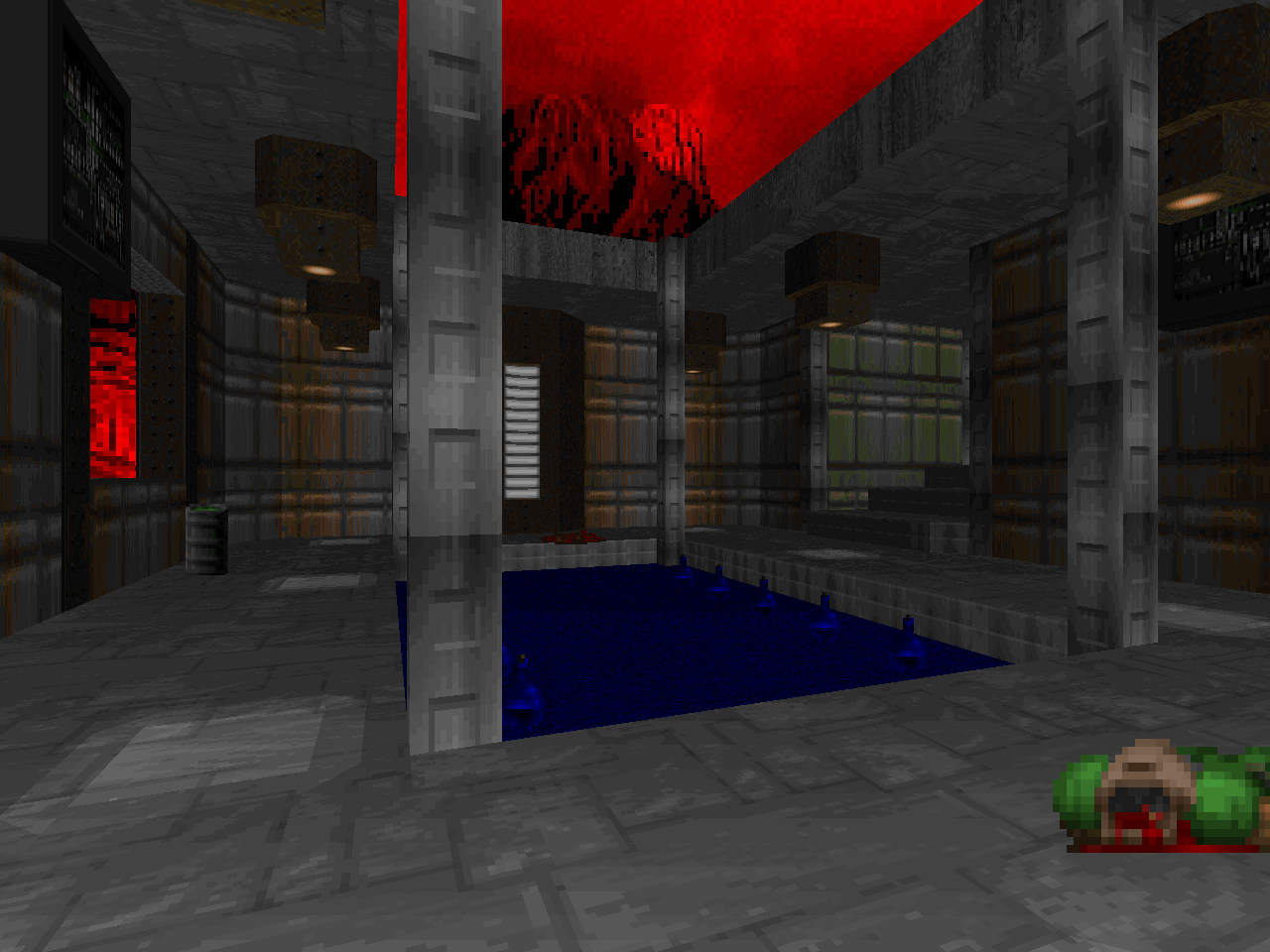

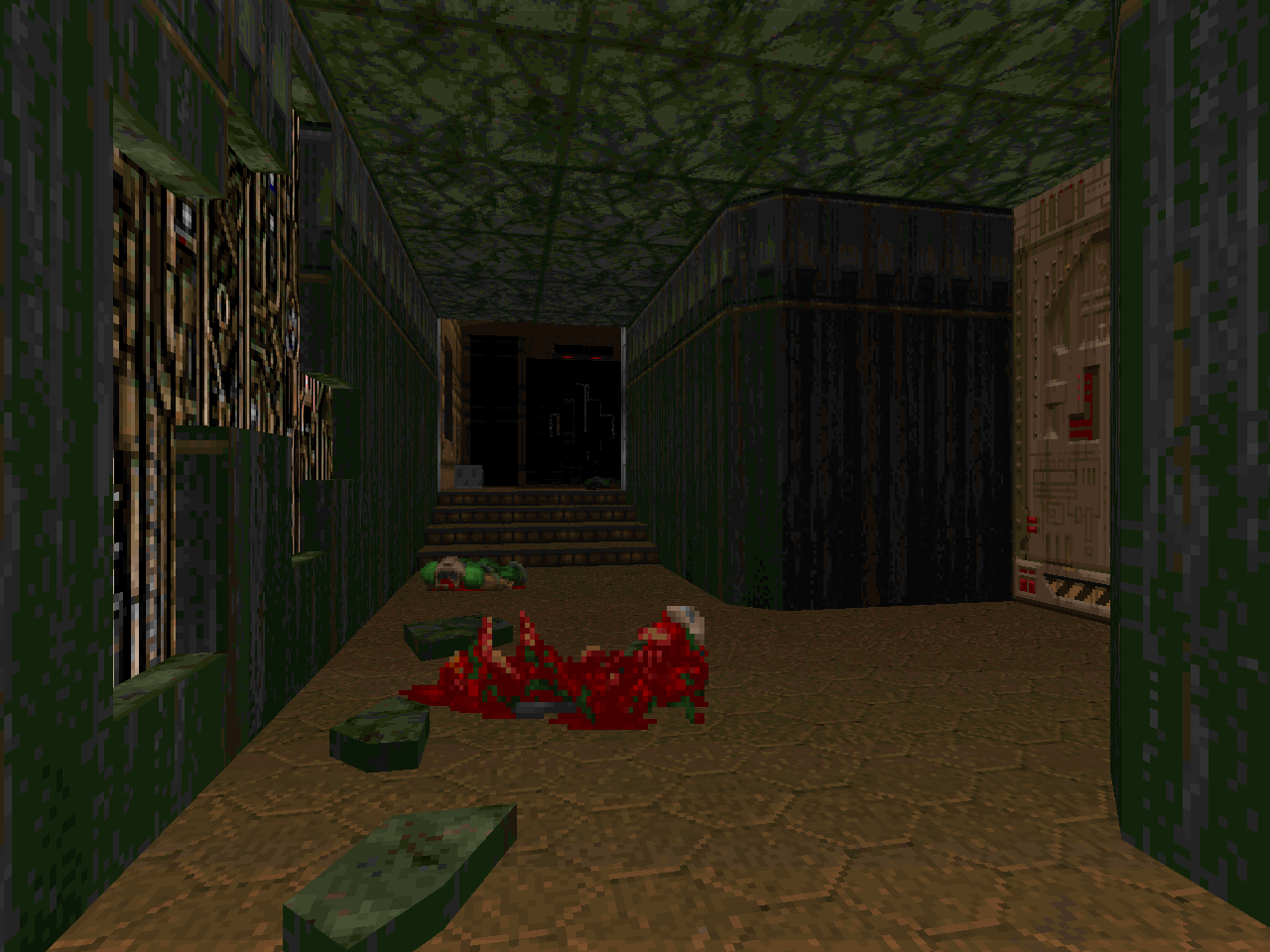
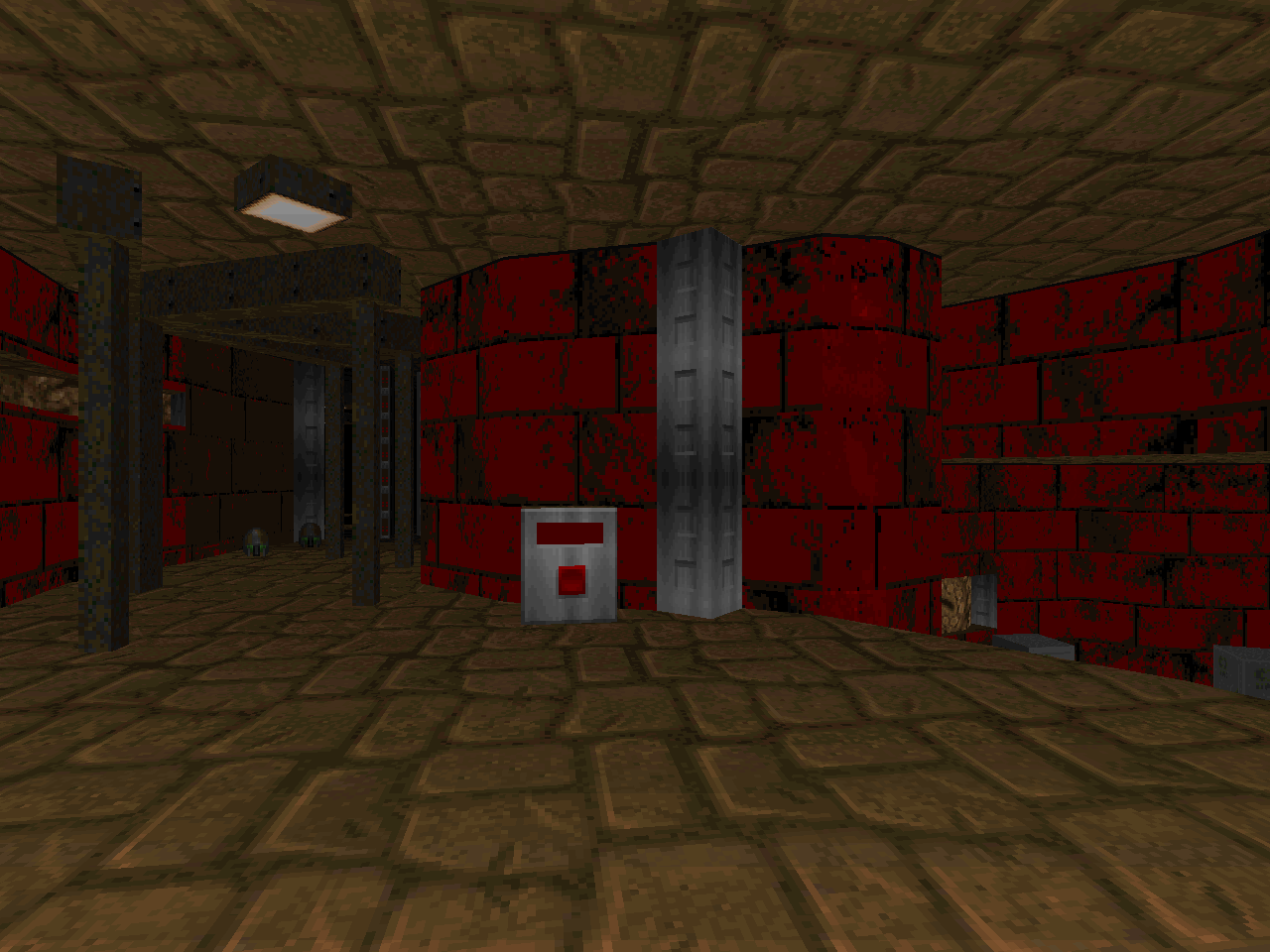
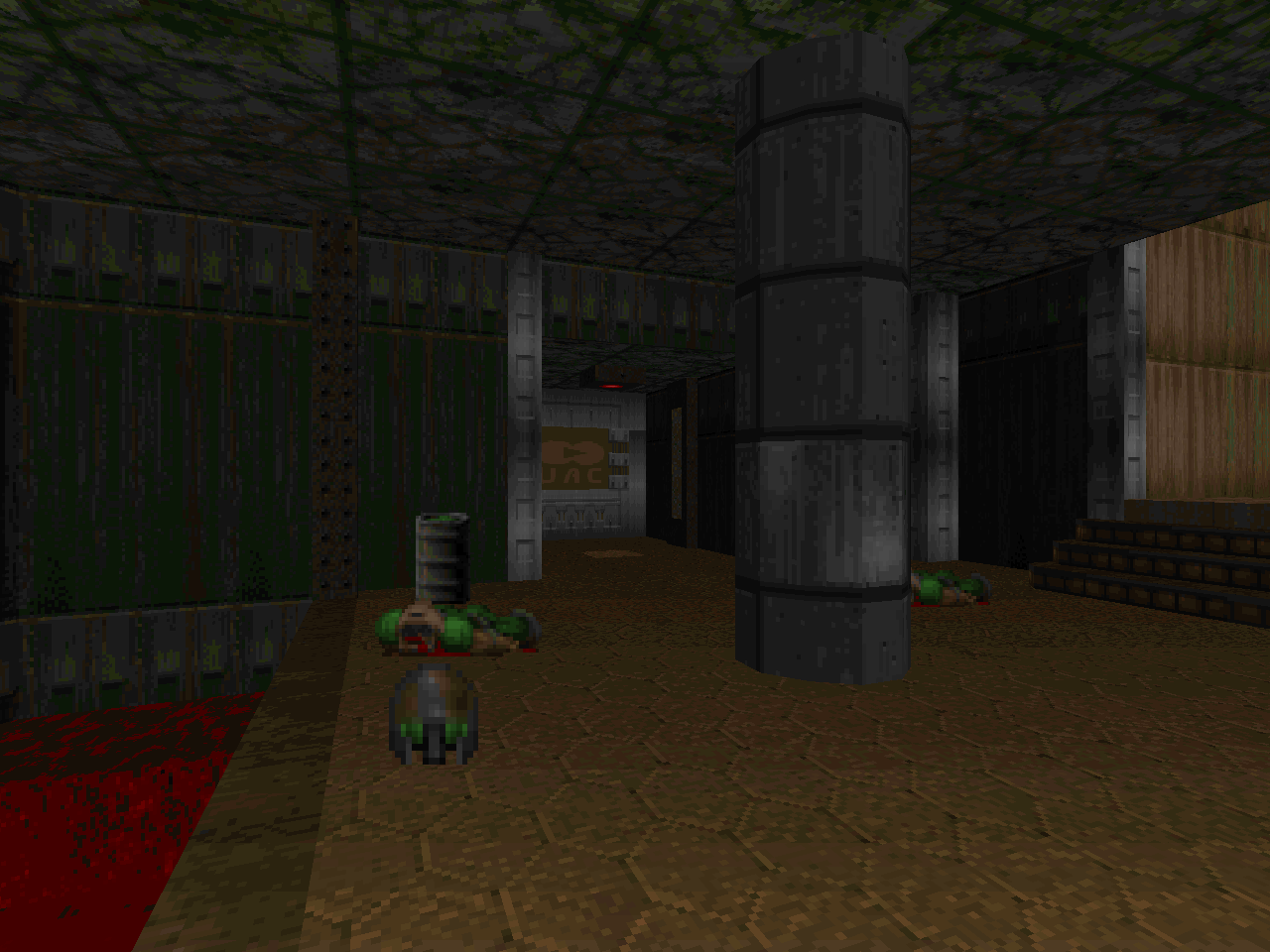
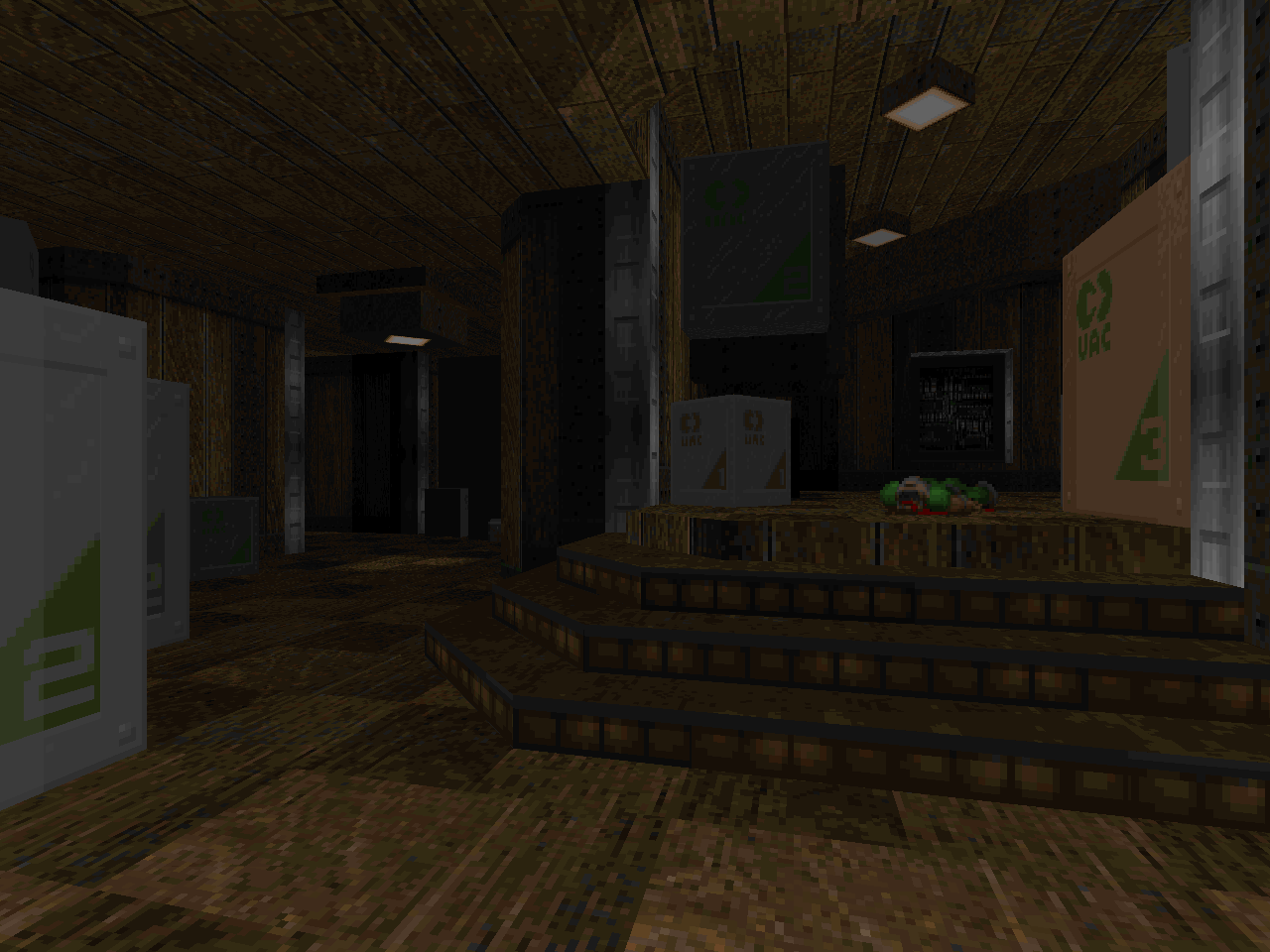
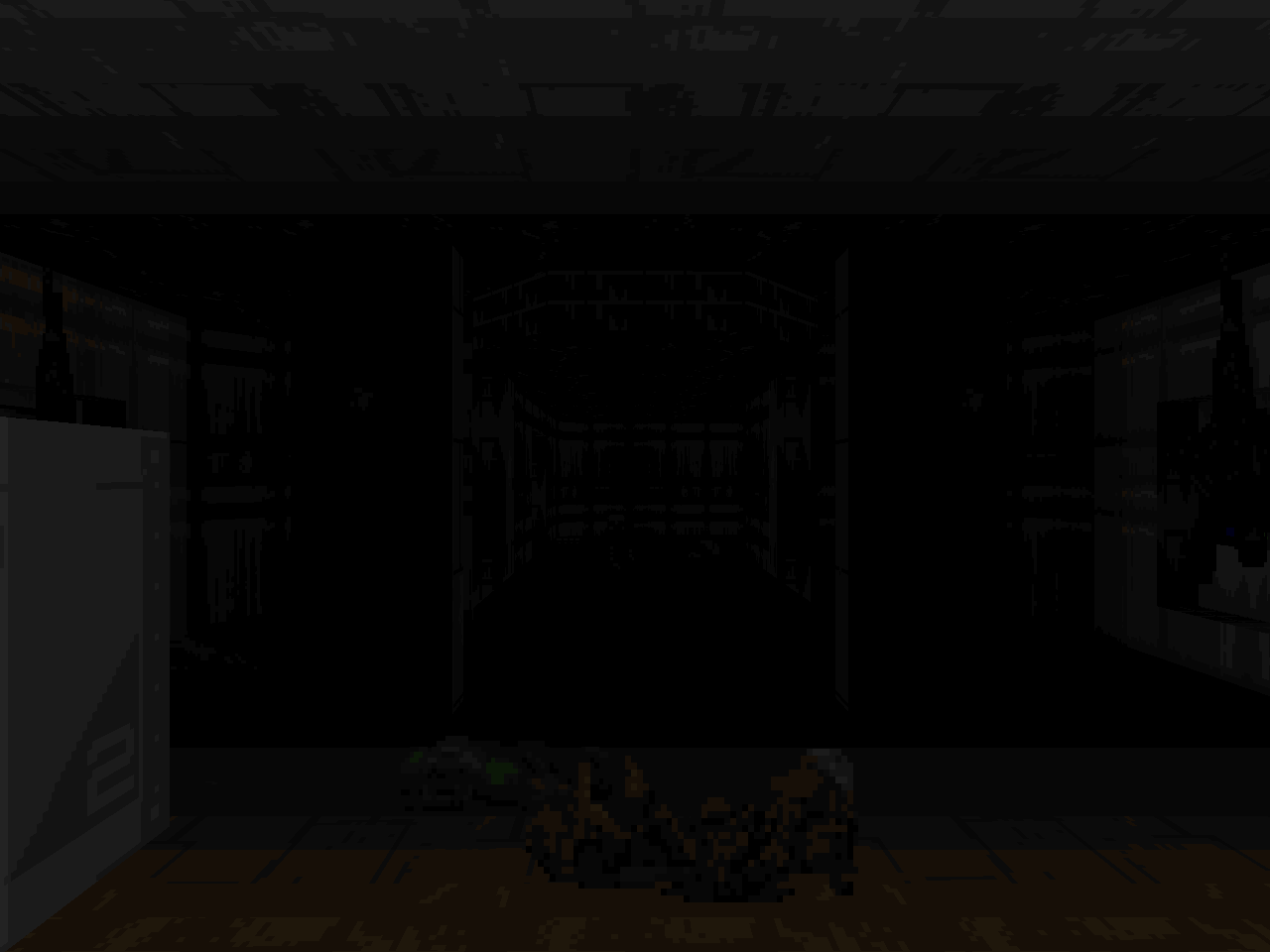

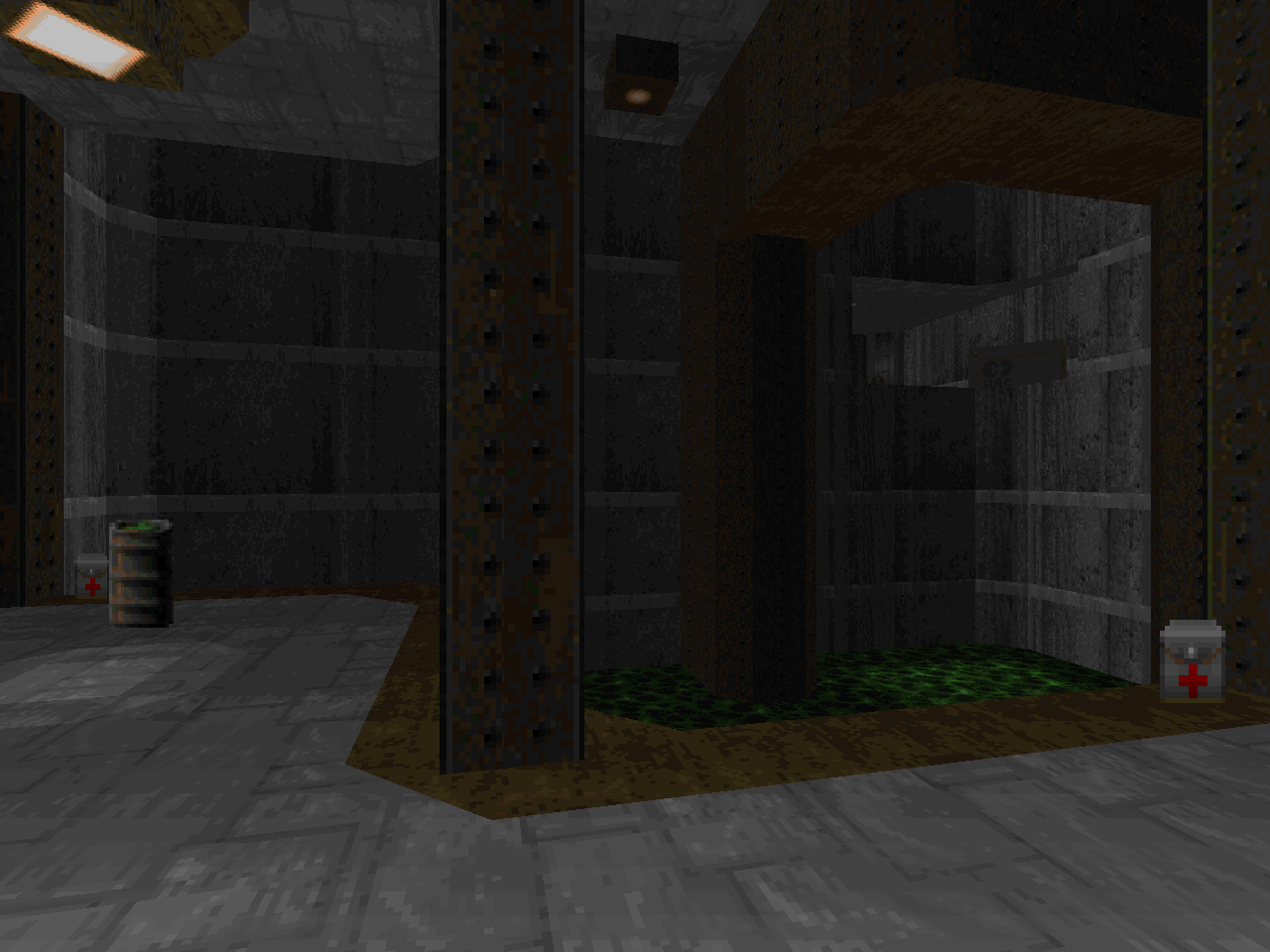
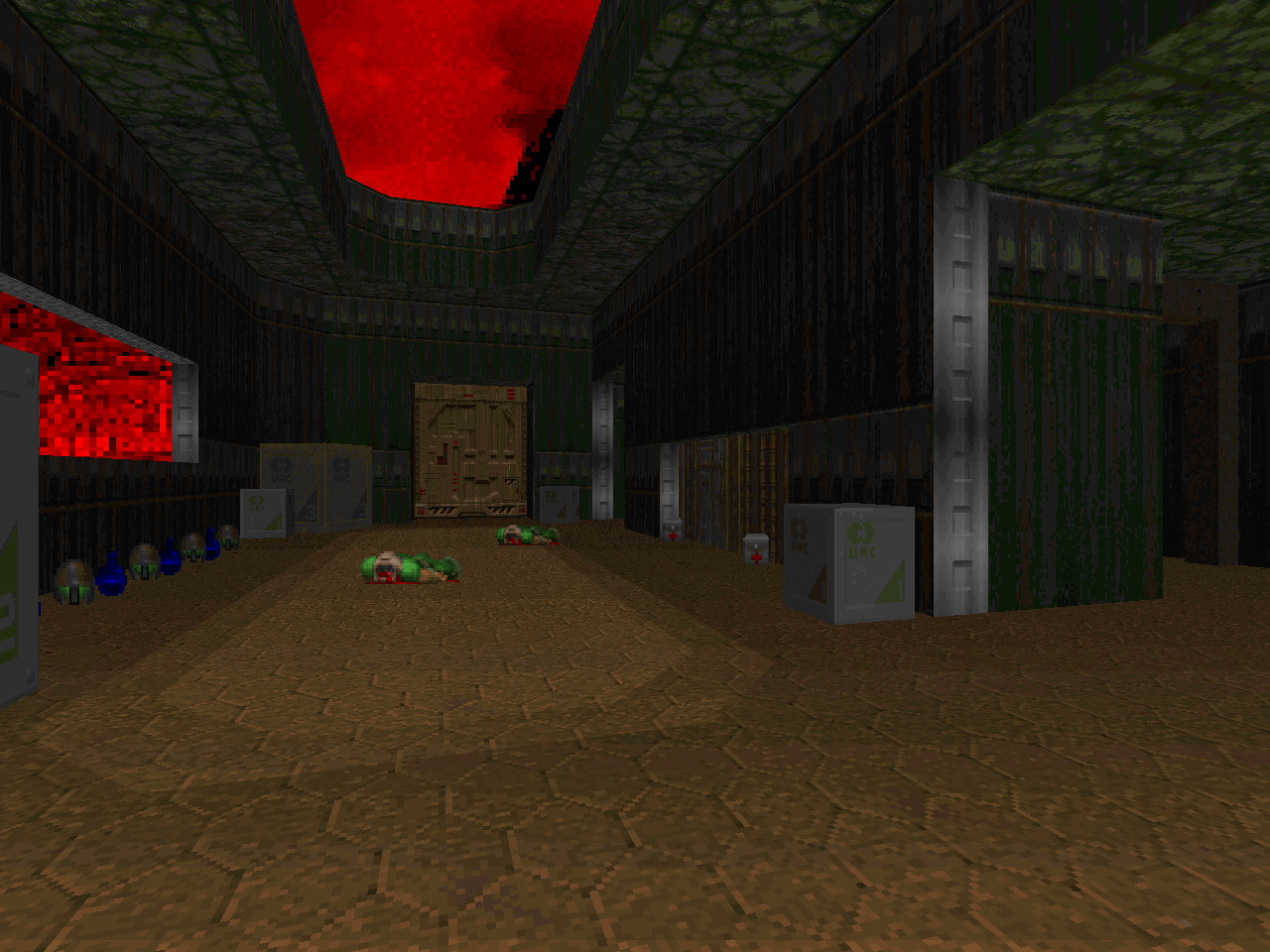
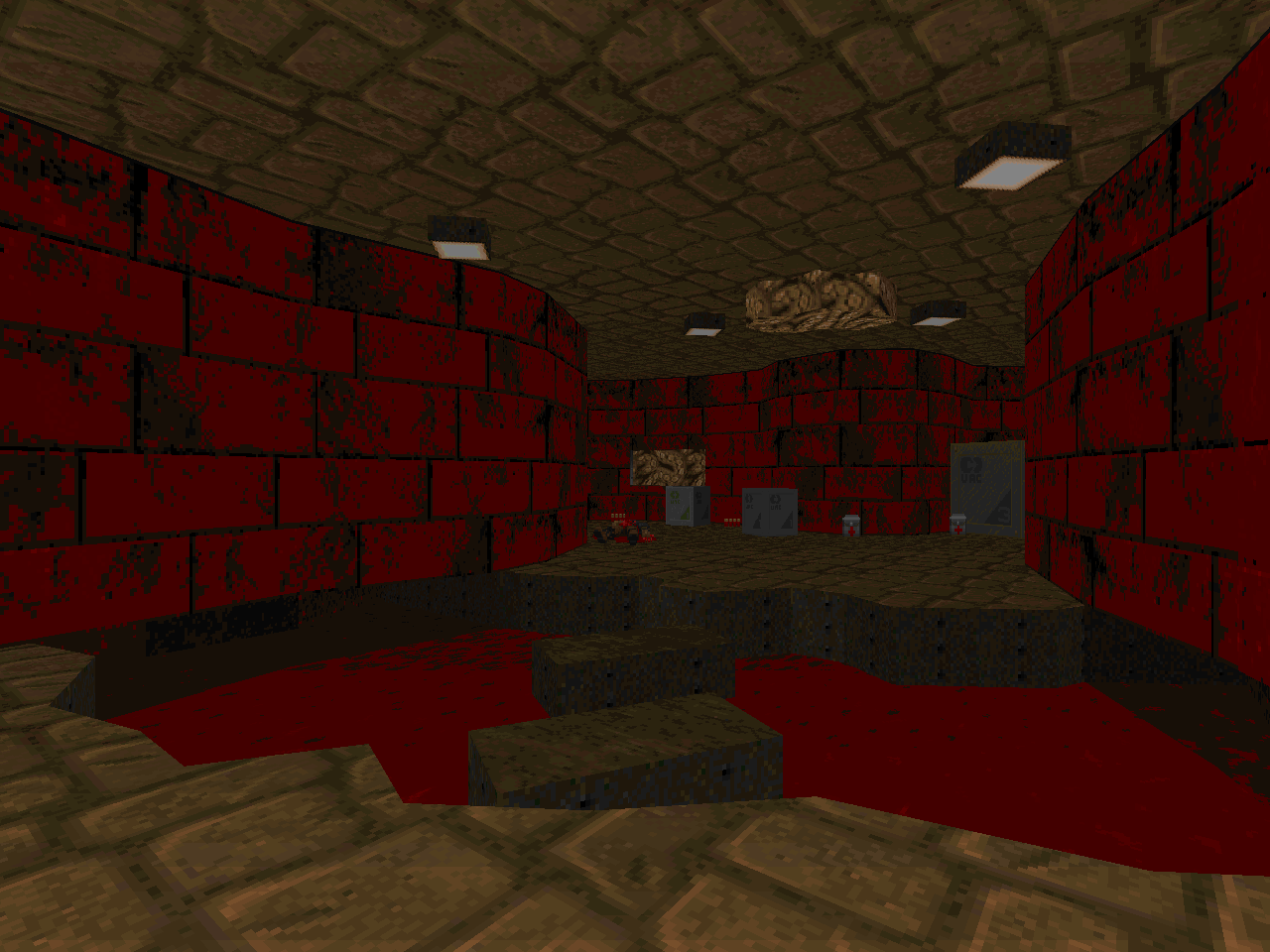
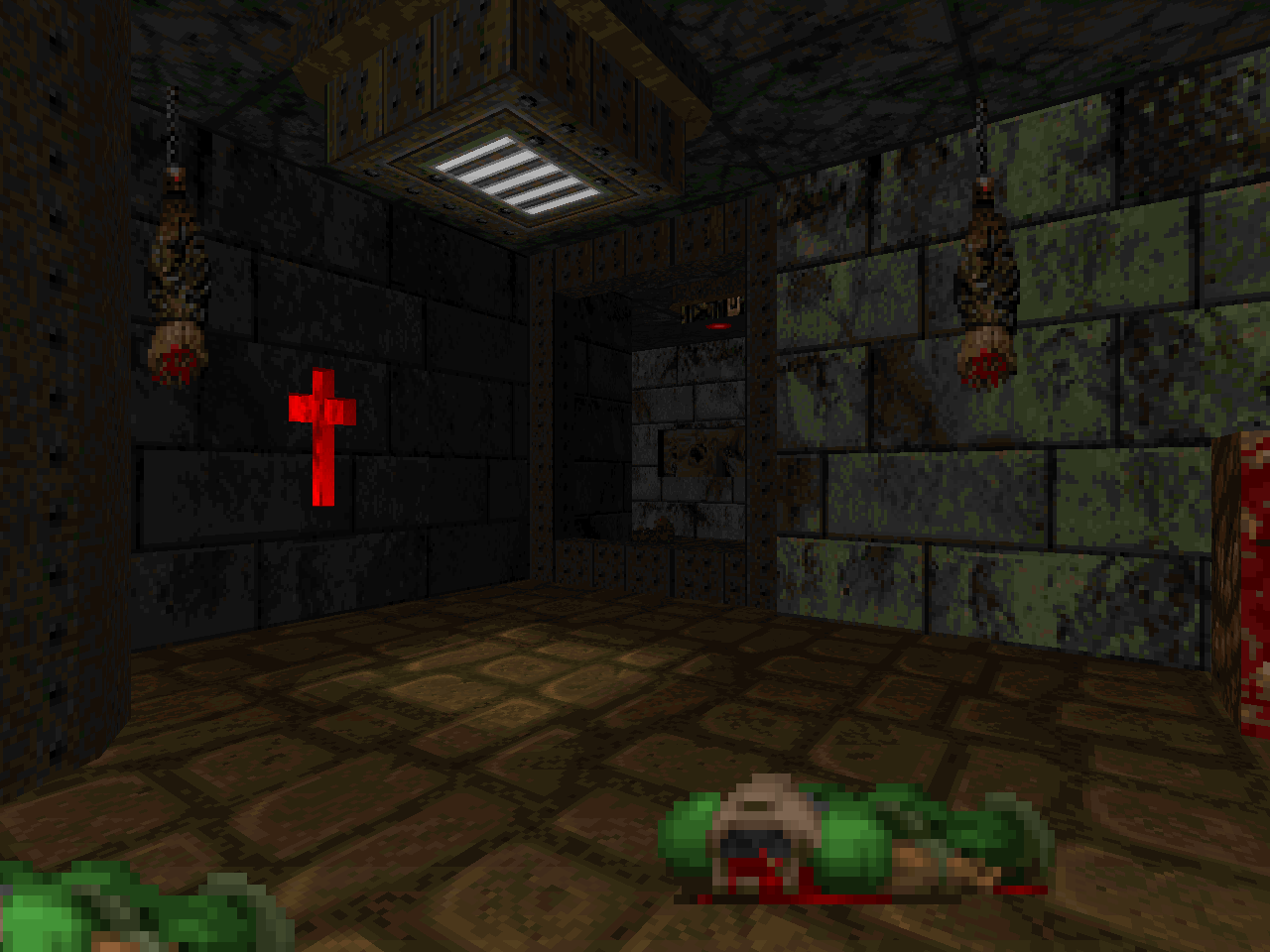
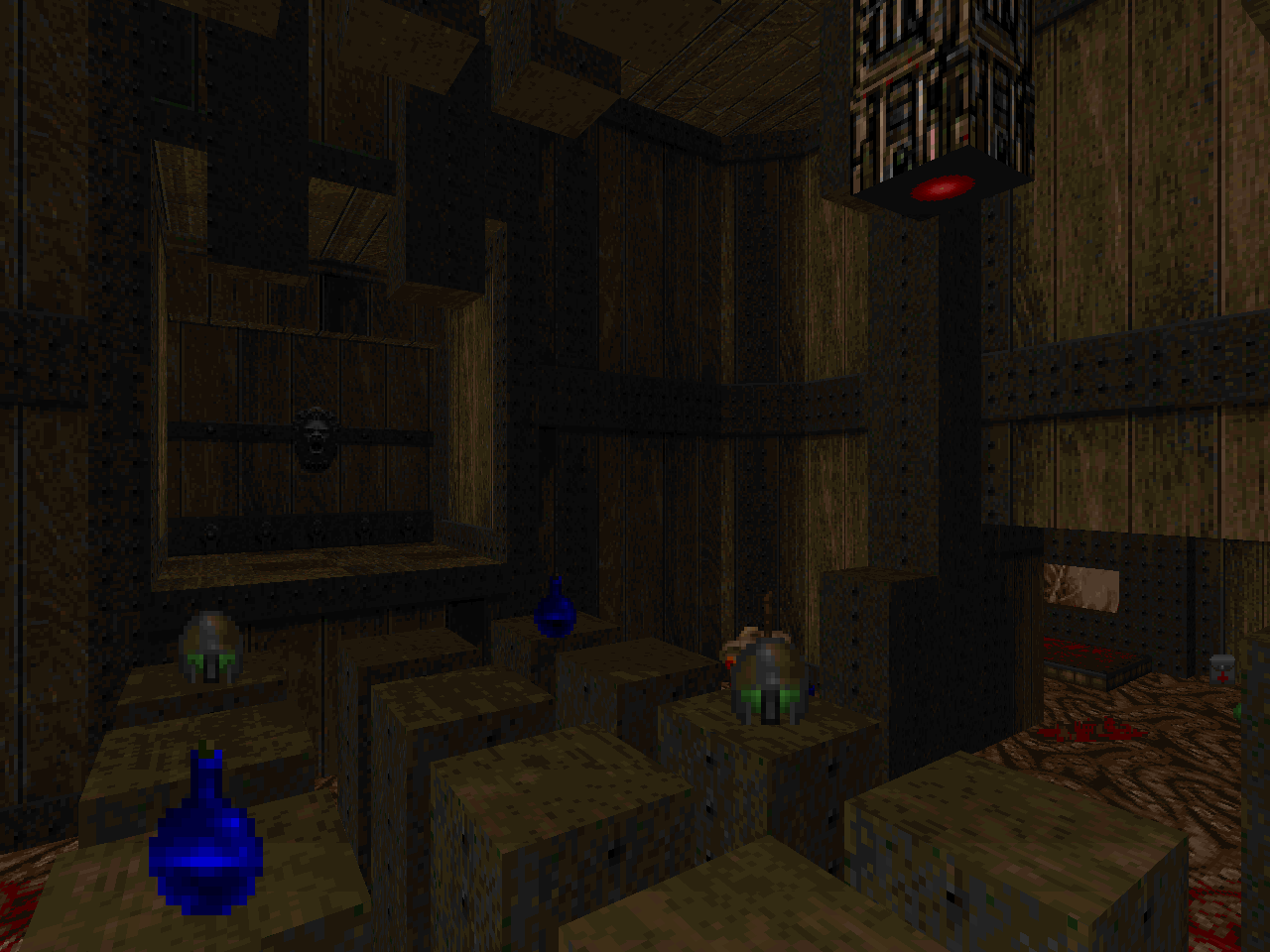
No comments:
Post a Comment